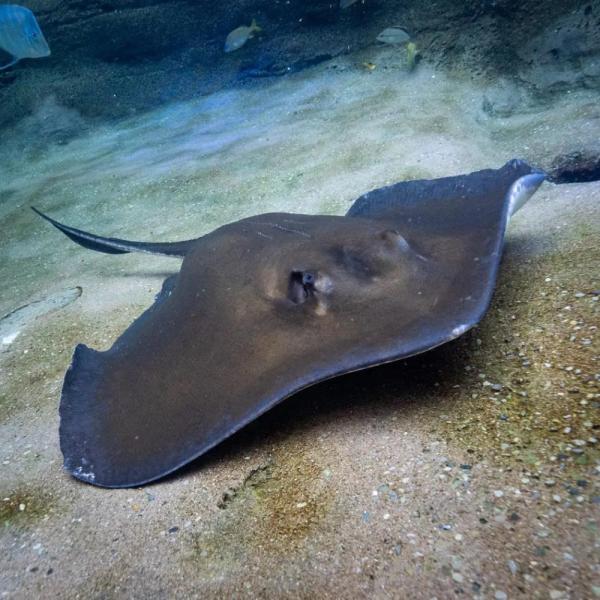These diamond-shaped rays are olive-brown to greenish grey on top and creamy white underneath. This coloring helps them blend in with their surroundings. Southern stingrays use their pectoral fins to stir up the sandy ocean floor to bury themselves to hide from predators or prey. Like sharks, their skin is covered in tiny, tooth-like structures called "placoid scales." These scales point towards their tails, which help reduce drag as they swim.
Unlike fish, they don't have a swim bladder or an oil-filled liver to keep them buoyant, meaning that if they stop swimming, they will start to sink. Their flat bodies and wide fins allow them to glide smoothly through the water and rest on the ocean floor, which helps them save energy.
The tail of a stingray can be around twice as long as its body and has one or two barbs near the base. These barbs are serrated, covered in venomous mucus, and mainly used for protection. A stingray often loses its spine when it injures another creature. Loss of a barb usually results in growing a replacement within a short period.
ATTENTION: Similar to how we cut our fingernails, the rays at the Columbus Zoo and Aquarium have their spines trimmed regularly, making them safe to touch.
Rays can detect the electrical fields of other animals, which helps them find their food hidden in the sand. They can sense small changes in water pressure made by prey like mussels and clams.
Stingrays breathe through openings called "spiracles" located behind their eyes, and their gills are located on their flat underside. Water enters through the spiracles and exits through the gills, leaving their mouths free for eating.









